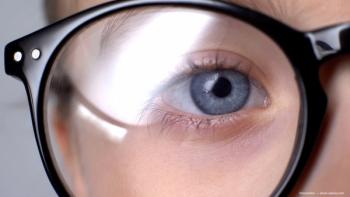
- Ophthalmology Times: March 2024
- Volume 49
- Issue 3
Adopting Radius into the practice
New technology may shift the diagnostic paradigm
A collision of reality and hopefulness influenced my decision to incorporate an advanced diagnostic and patient engagement virtual headset into use at North Bay Eye Associates. As the clinics got busier post-pandemic, our flow was impeded by our doctors waiting for a patient to get to the field room or waiting for the patient still in the field room. Floor space was an expensive premium, so expanding our footprint just to have a second field room at our clinic sites was a nonstarter.
As someone who loves the flow in the office to be reminiscent of a great orchestra working in concert, I knew our orchestra was broken. The stubborn side of me tried many work-arounds (eg, rescheduling fields repeatedly) or attempted faster field strategies (which in turn yielded less reliable data). The truth was evident: The waiting time to have visual fields performed efficiently in the practice was hampering flow, and social media reviews of wait time in my office reflected it. Patients, staff, and doctors all felt it was time for a change.
The final straw was when our bowl-mounted visual field machines started to malfunction, producing bottlenecks that paralyzed clinic flow. The subsequent service visits for repairs were time- and labor-intensive, expensive, and further disrupted clinic performance. The process of obtaining visual fields seemed to be in need of a revamp––shifting from bulky aging equipment to technologies that are more patient friendly and efficient while also remaining accurate.
I wanted a test that I could feel comfortable would produce similar results to my “gold standard.” But what to do? A few portable visual diagnostic systems were on the market, but they lacked scientific rigor demonstrating quality and data validity. For example, companies were trying to circumvent battery life limitations by changing the background luminescence of the test, which we all know causes different photoreceptors to be stimulated. There remained a need for a convenient, efficient, patient-friendly test with proven validity.
At about the same time these real-world issues were occurring in my practice, a longtime friend from industry approached me and asked if I would like to get involved with a virtual reality headset company that was successful in the low-vision space but now transitioning into virtual visual fields. With a management team focused on quality, there was no rush to commercialization. The desire to change the diagnostic paradigm was evident in the company culture.
Already in place was a collaborative team of top talent from the visual science world, Silicon Valley ingenuity, and operations. In my years of partnering with industry, I knew that incorporating such an open-science collaborative approach always worked best. As a first step, our outreach was to some of the brightest medical doctors and optometrists in the space who were attempting to advance the hardware and software.
A rigorous prospective study was conducted (NOVA–whose results were submitted for publication) demonstrating concordance of relative accuracy test audit standard 24-2 (Radius program) to the “gold-standard” Swedish Interactive Thresholding Algorithm standard 24-2 (Humphrey Field Analyzer-Carl Zeiss, Meditec), with pointwise regression analysis and comparison by masked graders. The study met all endpoints. At the same time, adjustments in hardware were being fine-tuned for patient comfort and improved ergonomics. We were on our way.
Today, Radius is becoming a standard in many eyecare physician offices. Our colleagues’ input is helping drive the innovation. Through research being done at some of the top educational programs in the United States and Canada, the device and software continue to evolve and grow. Open science works: being realistic about limitations and working collaboratively to overcome them is our motto.
In my own clinical world, I use Radius in approximately 95% of the fields performed in my practice. Patients and staff are overwhelmingly happy. Our patient flow is significantly improved. I can run the fields almost anywhere, from an exam lane to a small corner in the office. When a software update is needed, there is no need to have a service technician on site: new launches and updates are cloud-based, resulting in no downtime or burden on local staff or clinic flow.
Training staff to run the tests is relatively easy, allowing those with less technological experience to deliver the test. Patients’ physical limitations have also been accommodated, allowing those with arthritis, kyphosis, or facial structure abnormalities or even patients who are easily distracted to complete a visual field. The tangible take-home benefits of incorporating the system have included happier patients, more time for physicians and technicians, more versatility in technician qualifications, high-quality data, faster patient throughput, and significantly improved clinic efficiency.
From my comprehensive medical and optometry colleagues to glaucoma specialists managing the most severe disease, the device is changing the landscape of eyecare. This goes for patient education as well. Immersive educational content can be viewed through the headset, allowing you to upload your own educational or promotional content or use preloaded content that Radius already has available. You can also upload content from the internet (eg, YouTube) and customize it for individual patient needs or languages. What a time-saver for preoperative consultations or just educating patients about their condition!
Radius has not gone unrecognized by our industry colleagues. A recent commercial partnership was established, with Glaukos Corp becoming the exclusive marketing and sales agent responsible for marketing, promoting, and soliciting orders for the Radius XR wearable patient engagement and diagnostic system within the United States. Meanwhile, Radius will continue to lead development efforts for Radius XR and continue to focus on innovation and collaborative research.
I am eager to retire my bowl-based perimeter in the future and change our visual field room into a meditation-yoga retreat.
Jason Bacharach, MD
P: 707-762-3573
Bacharach is the founder and medical and research director at North Bay Eye Associates, Inc, in Sonoma County, California, and codirector, Glaucoma Service Department of Ophthalmology at California Pacific Medical Center, Pacific Vision Eye Institute. He has received consultant and research funding from Glaukos Corp, and equity, research, and consulting funding from Radius Corp
Articles in this issue
over 1 year ago
ASCRS 2024: 50 years and countingover 1 year ago
Seeking a solution to the anesthesia provider shortageover 1 year ago
Technology pinpoints the retinal damage occurring in IRDsover 1 year ago
How to boost your efficiency in the ORover 1 year ago
Cyclosporine drop for treating dry eye offers new advantagesNewsletter
Don’t miss out—get Ophthalmology Times updates on the latest clinical advancements and expert interviews, straight to your inbox.



















































.png)


